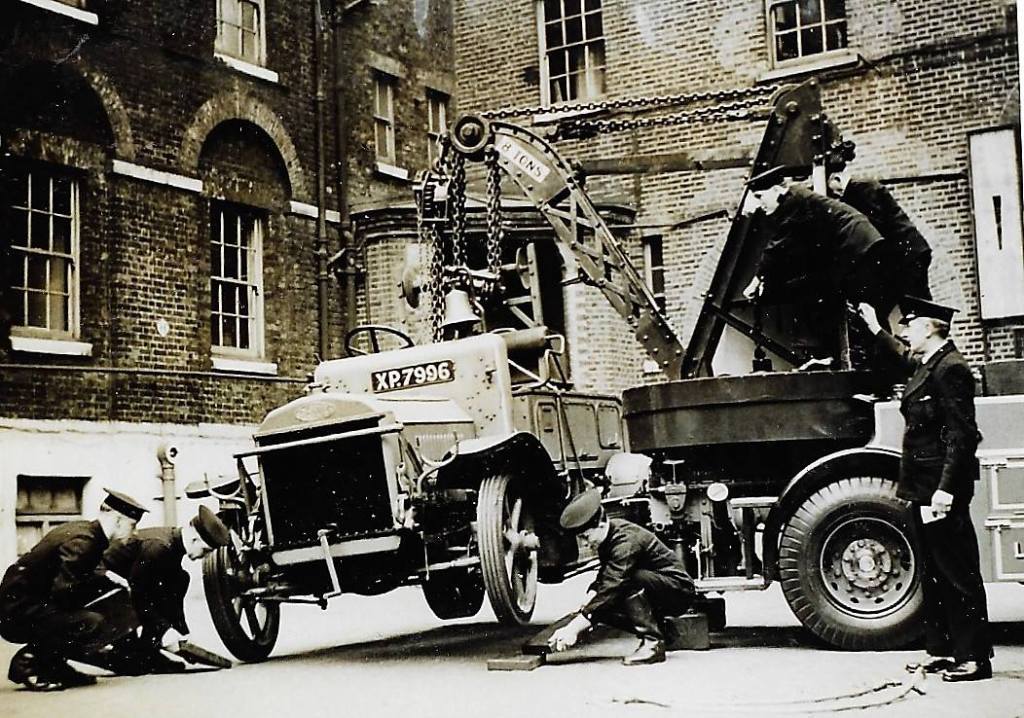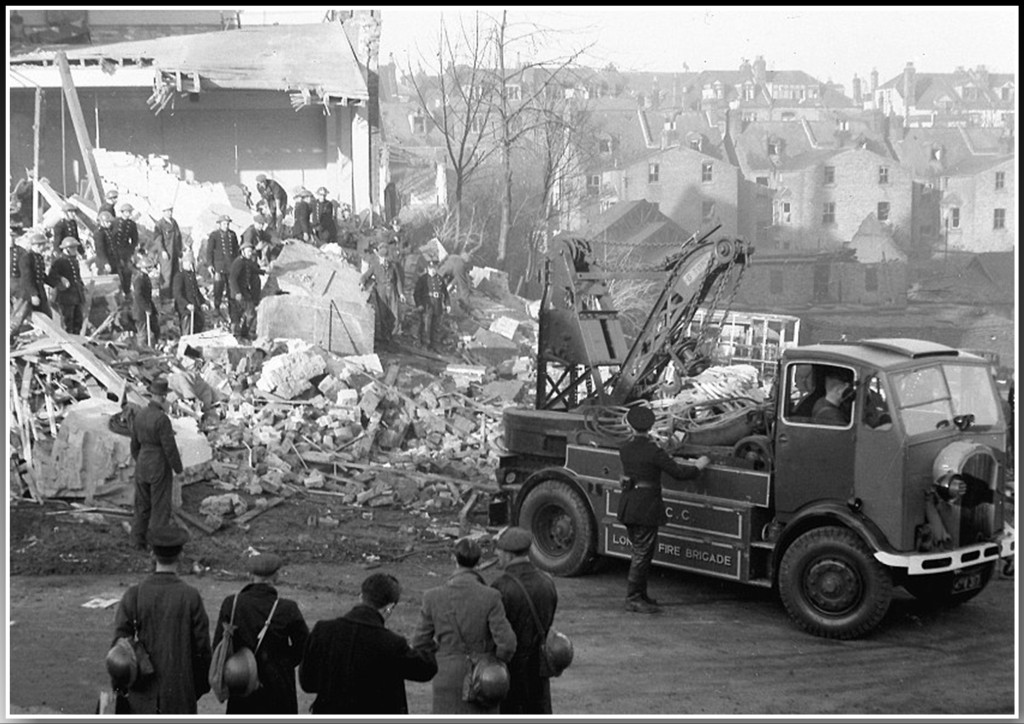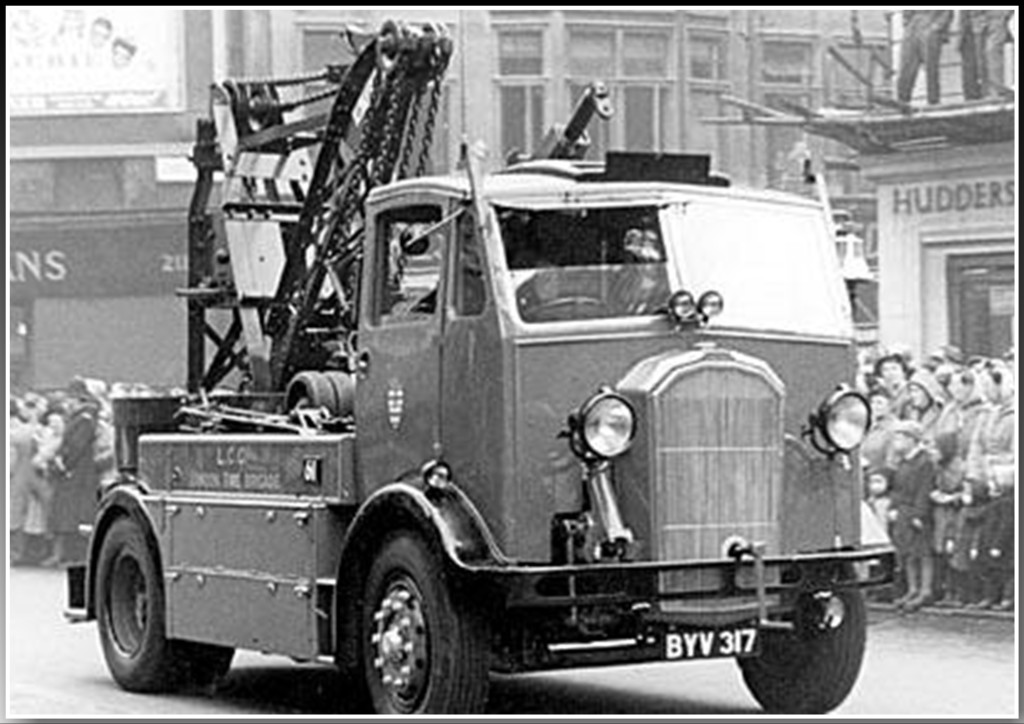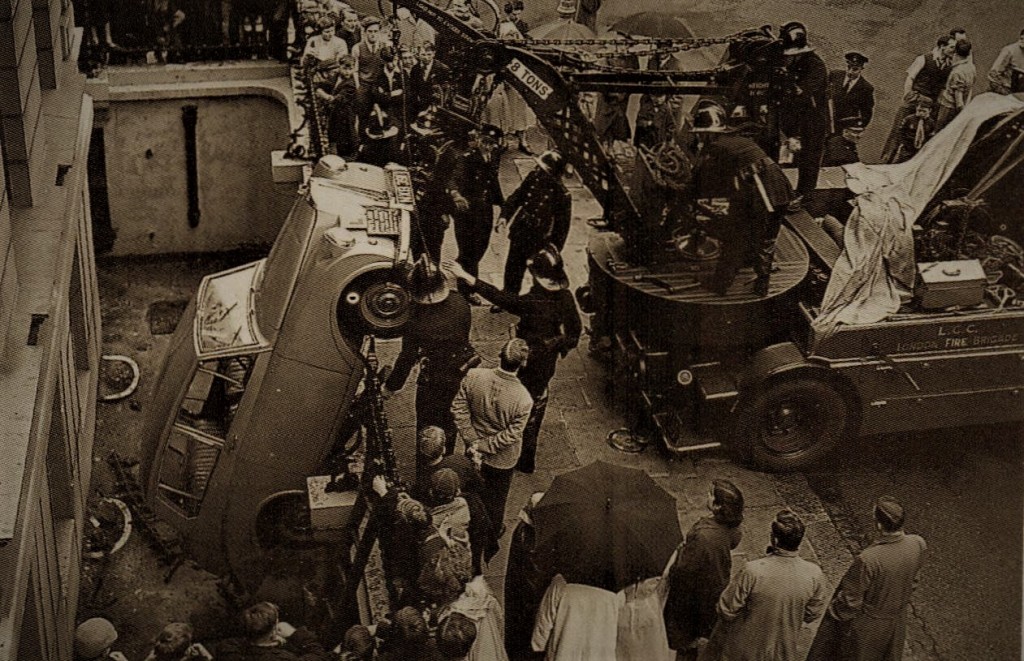
Unlike the canteen van, there was only ever one breakdown lorry in the brigade fleet at any one time. They remained at the headquarters stations, firstly Southwark and then Lambeth, until the opening of the new Clapham fire station in 1960, when Lambeth’s breakdown lorry was transferred to the D Divisional HQ-D60.
The originals of the breakdown lorry can be traced back to Arthur Dyer, the Chief Officer of the LCC-LFB. (1918-1933). The advent, and progress, of the motorised fire engine brought both improvements and challenges to Dyer. Quicker and more efficient than their horse drawn counterparts Dyer realised he had too many fire stations and in the 1920s he closed 20 of them. The petrol driven appliances were also subject to the occasional mechanical failure and Dyer authorised the adaption of a Brigade lorry to act as the first breakdown lorry which could return the vehicles to the Southwark mechanical and vehicle workshops. However, the lorry also carried other lifting equipment, most notably a large lifting tripod, which could be deployed at the increasing number of special-service calls the Brigade was expected to deal with.


His immediate successor (Major Cyril Morris. MC.) was largely responsible for the reorganisation and re-equipping his Brigade during his tenure (1933-1938). Among his many innovative designs (and introductions) was a purpose-built breakdown lorry-BYV 317. With a crew of two and based at Southwark, in addition to its vehicle recovery role, it also attended major accidents and supplemented the emergency tender crews with its heavy hot-cutting equipment.



Transferred to the new Lambeth headquarters in 1937 the breakdown provided valuable service during the Blitz, assisting at the scenes of enemy bombings, and lifting/moving heavy debris. Not adverse to public outings it was a regular feature in the Lord Mayor’s Parades in the City of London.

Chief Officer Frederick Delve had guided the Brigade through the latter WWII years and was now overseeing the Brigade’s return to local authority control (London County Council). Delve gave a contract to Dennis of Guildford to provide the brigade with a new breakdown lorry-SLD 661. It became an important tool in the Brigade’s ability to deal with the aftermath of road traffic accidents, especially those involving heavy vehicles.



Transferred to Clapham fire station on its opening (D60) it never made it to the creation of the Greater London Council. In 1964 it broke its back when the jib failed to go under an RSJ when on towing duties. It fell to Dennis to supply the Brigade’s last breakdown lorry-314 FLM. It maintained the five-ton capacity crane and a two-ton hydraulic winch.

The breakdown lorry was not the busiest of appliances but they carried a talented crew. Trained in hot cutting and the limits of their equipment’s capabilities they were frequently a great asset to any officer in charge with the knowledge and skills they brought to the scene.

The London Fire Brigade breakdown lorry never made into the 1980s. It was withdrawn from service at the end of the 1970s and not replaced.